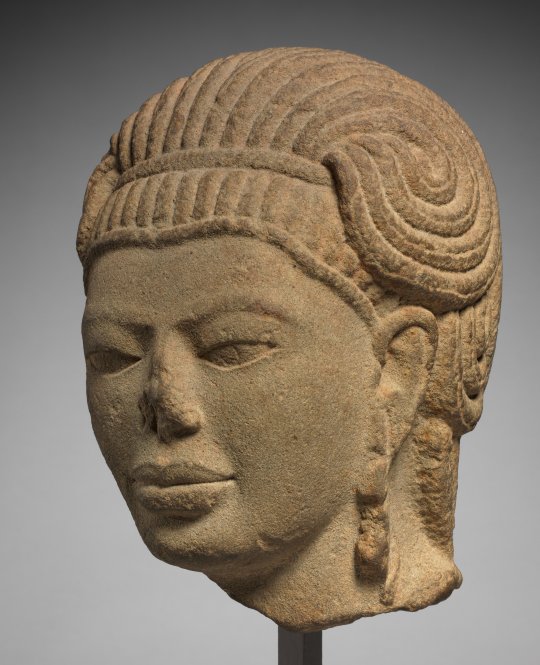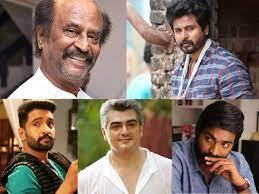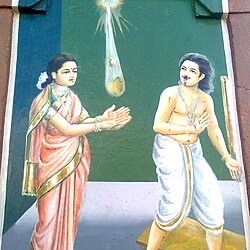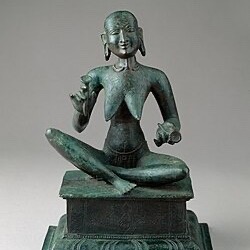#Tamils history
Explore tagged Tumblr posts
Text
In the estate, Thangamaal, despite not knowing how to read or write, raised her son, Neelavanan, with stories from the Mahabaratham, Ramayanam, as well as Tamil Bhakti songs. In spite of her devotion towards Hinduism, she was a woman who liked eating beef, a meat often seen as ‘impure’ by caste-Hindus.
“Once, my mother bought beef from the town, and when the neighbours asked her what she was cooking, she said mutton. When I asked my akka (sister) why amma (mother) said that, she told me that people [Hindus] who pray can’t eat beef,” recalled Neelavanan.
As Neelavanan grew up, he understood that Hindu religiosity surrounding beef was a weapon against Dalits who consume it. “People around me eat mutton, chicken, water monitors, pork—they eat everything,” he said. “But when it comes to beef, they say that it is god. They brand [Hindus] who eat beef as coming from a certain caste. We are buying [beef] with our own money; we did not steal or beg for it. Yes, I eat beef, so what?”
Ove time, however, the culture of eating beef has deliberately declined among Dalits in Malaysia as a way to escape casteism and adapt to caste-Hindu practices. This shift can be seen in Neelavanan’s own family, where his siblings and relatives refuse to eat beef and even scrutinise him for his beef-eating habits.
247 notes
·
View notes
Text

Head of Male Deity, possibly Aiyanar, Central Thailand, Phetchabun province, possibly Si Thep, 600–650. Cleveland Museum of Art (ID: 1970.11). The dreadlocks suggest that this figure is related to the Hindu god Shiva, and the sensitive rendering of the facial features indicates that it was carved during the early phase of stone sculpture production in Thailand. A more complete sculpture of another male figure with dreadlocks and youthful features is known from Thailand and shows him seated with one knee up, supported by a yoga strap. In South India, a deity of this description is worshiped as a guardian on the outskirts of villages on the banks of ponds and reservoirs, known as Aiyanar, which means "Lord" in the Tamil language. Alternatively, this figure could be an ascetic, or follower of Shiva. (Cleveland Museum of Art).
#thai#thailand#tamil#thai history#thai art#hindu#shiva#hinduism#hindu art#sculpture#middle ages#medieval history#medieval art#medieval#aiyanar#si thep
36 notes
·
View notes
Text
Idk why Indians have to fight about which is the oldest spoken language till date- Sanskrit or Tamil.
Just celebrate the fact that both of these languages are from India. So no matter whichever one it is, it's still of Indian origin! That's all that should matter.
#indian languages#ancient india#ancient languages#sanskrit#tamil#indian history#india#desiblr#ancient history
59 notes
·
View notes
Text

The oldest language in the world that is still spoken today is Greek, in second place is Chinese.
Greek is considered the oldest language in the world that is still spoken today, with a continuous history spanning over 3,400 years.
The Greek language has evolved significantly over the centuries, from Ancient Greek (the language of philosophers like Socrates and Plato) to Koine Greek (the language of the New Testament) and modern Modern Greek as spoken today.
Despite its changes over time, it maintains a deep connection to its ancient roots, especially in terms of vocabulary, structure, and influence on other languages.
In second place is Chinese, which is also one of the oldest and most enduring languages in the world.
The earliest form of written Chinese dates back over 3,000 years to Shang dynasty (around 1200 BC).
Like Greek, Chinese has undergone significant evolution, with Classical Chinese being the standard for much of China's history, followed by Mandarin, which is the most widely spoken variety today.
Both Greek and Chinese not only hold linguistic significance but have also profoundly influenced philosophy, literature, and culture throughout history.
© The Archaeologist
#oldest written languages#language#greek#chinese#ancient roots#ancient civilizations#ancient history#history#civilization#linguistics#aramaic#hebrew#tamil#persian
8 notes
·
View notes
Text

5 notes
·
View notes
Text

Day 11: Nagapattinam Chandrashekharan Vasanthakokilam!
Nagapattinam Chandrashekharan Vasanthakokilam was born in 1919, in British-occupied India. She studied music from an early age, and was trained in Carnatic singing, the classical music of Southern India. At only nineteen, she won a prestigious award at the Madras Musical Academy, and she performed at festivals to great acclaim.
Nagapattinam’s husband, however, resented her musical career, and her marriage soon disentegrated; she refused to give up singing. Soon, she was selling records, and received offers to enter India’s newly burgeoning film industry.
From soundtracks, she moved on to acting appearances, featuring in films throughout the 1940s. It was from this that she met and fell in love with director C. K. Sathavisam, beginning a much happier relationship that would endure for the rest of her short life. Nagapattinam suffered from tuberculosis, which rapidly worsened in 1951; at her death, she was deeply mourned. In only three decades of life, she had become one of the luminaries of Indian classical music, and is still beloved to this day.
#Nagapattinam Chandrashekharan Vasanthakokilam#nc vasanthakokilam#indian history#tamil history#music history#history#awesome ladies of history#october 2024#my art#charcoal#chalk pastel
3 notes
·
View notes
Text
Kerala has been widely lauded for having achieved human development goals comparable to those of economically advanced countries despite being economically poor. Its allegedly egalitarian economic model was highlighted as an alternative to neoliberal, free market policies. However, the ‘pro-poor’ policies largely passed over the plantations. Plantation workers have not benefited from the land reforms of the 1960s and 1970s, and thus the majority have remained poor, landless labourers working within the exploitative plantation system. Moreover, the women plantation workers face multiple levels of discrimination because they are, at the same time, Tamil, Dalit, and female. Remarkably, though, the Pembillai Orumai challenged the negative caste prejudice and ethnic stereotyping of the plantation Tamils. The ethnic stereotyping of lower class Dalit Tamils is epitomised by the slur ‘pandi’, which symbolises the inferior in the oppositions of modern/non-modern, and resourceful/unresourceful. The portrayal of the Tamil plantation women as unresourceful was evident in the racist colonial conception of Tamil plantation workers as hard working but unintelligent. Echoes of this imagery were everywhere during the Pembillai Orumai strike. Many commentators, including trade union leaders, framed the strike as an anarchist act that could not be considered a proper form of resistance. They also repeatedly claimed that ‘invisible forces’ instigated the strike, an accusation the leaders of Pembillai Orumai strongly denied. These accusations were meant to rob the underclass—lower caste—Tamil speaking women of their due credit by suggesting they were incapable of organising themselves. Yet it was this very community who designed and implemented a model of resistance that interrogated the contradictions of the widely celebrated Kerala development model and its egalitarian claims. And as all actions, this one had its own momentum. It also became an act of rebellion that challenged the social relations responsible for their alienated condition, including the ethnic stereotypes that characterised them as inferior. It was an attempt to reclaim human personality in a Dalit liberation tradition, not only for them but also for their men and their dead indentured ancestors.
— The women strike back: the protest of Pembillai Orumai tea workers by Jayaseelan Raj
#plantation tamils#kerala#neoliberal india#neocolonial india#pembillai orumai#tamil dalit workers#tamil indentured history#jayaseelan raj#neoliberalism#neoliberal casteism#kerala tea plantation#plantation neoliberalism
137 notes
·
View notes
Text
saddest news in the world: guy who wants to know about everything is stupid as fuck and can hardly read
#something very evil about god making me as inquisitive as i am#and then throwing my way 50 roadblocks in the paths that most people go to Learn said things#*picks you by the scruff and removes you from school* *gives you reading ocd* *makes you not know tamil so you cant read tamil books abt#indian history* Fuck This Guy In Particular#also the inferiority complex that makes me crumple the second i cannot understand anything for the first time<3 teehee#t#anyways i truly feellike i am rawdogging life.
7 notes
·
View notes
Text
youtube
#mantras#india#tamilnadu#america#mystery#ancient history#ancient rome#tamil news#tamil cinema#tamilactress#tamilmemes#Youtube
2 notes
·
View notes
Text
Tamil actors play a pivotal role in Indian cinema, contributing to its rich diversity and helping it reach new heights. With legends like Rajinikanth and Kamal Haasan leading the way, and a new generation of talented actors like Vijay and Suriya making their mark, the future of Tamil cinema looks bright.

2 notes
·
View notes
Text
Discussing the Tamil Genocide with @arunannow
youtube
5 notes
·
View notes
Text
Forgive me for repost this again here.
TW: ableist use of the word "psychosis".

Vajra's example refers to the Tamil genocide of 1983 ("Black July") by the ethnofascist Sri Lankan state. Forty years later so many Sinhalese you speak to hid Tamils in their houses themselves that it's a wonder the mobs found any to kill./s
But the patterns of history holds true. Once the dust settles, you'll find that nobody supported it, it was all the work of a few fringe extremists, we all did our best, and <insert victims here> weren't the only ones targeted anyway, why isn't anyone talking about the other people who suffered too? And so forth. No accountability, no self-reflection, rethinking or reparation, leaving the gates wide open for it to happen again, the exact same way, to the next scapegoat for the colonial apparatus.
This is why we say stop pitting victims against one another and start seeing each other through the common threads of our oppression. Otherwise you're just more attached to your trauma than you value liberation.
how will people live with themselves 5, 10, 20 years from now knowing they blindly fell for propaganda and rooted for genocide. We ask how the general German public, every day average people sided with the Nazis. We say to ourselves 'it would not have been me'
It IS you.
#never again starts with you#free palestine#colonization#history repeats itself#tamil genocide#black july#palestinian genocide#social justice#knee of huss
9K notes
·
View notes
Text
KARAIKKAL AMMAIYAR // SAINT
“She is one of the three women amongst the 63 Nayanmars and one of the greatest figures of early Tamil literature. She was born in Karaikal, South India, and probably lived during the 5th century AD. She was a devotee of Shiva. She was the first known one whom used the Andādi concept of literature, and also wrote Tiruvaalangaadu Tiruppadhigam and Tiruvirattai Manimaalai which symbolises the devotion towards lord Shiva, she was considered as the foremost among Bhakti saints to contribute to the devotional literature and its growth.”


0 notes
Text
Hello everyone,
I had originally created this account just to protect the name, but in the recent months I've realized that I am forgetting the poetry I learnt in school. So I've decided to post one kural per day. They are random and if some event happens to align with it, totally not my fault.
For those who do not know, Thirukkural [ trans. The great Message] is a collection of 1330 poems by an unknown author [Thiruvalluvar_ literally means the great wise person, contrary to popular belief it's not a name] in Tamil Nadu from 15th century BCE. It's one of our oldest surviving pieces of literature. It covers various topics from personal morals and familiar relations to politics and war.
Each kural has seven words [in tamizh], four in the first line, three in the next. It obeys a lot of classical tamil grammer rules and is considered one of the greatest literary work ever written.
So if you're ever in an argument and wanna quote something fancy, I'll add pronunciation guides, feel free to dm me for a voice note.
I would like to make it very clear that this is a gimmick blog made by an ex-student interested in tamizh history and literature, absolutely no political ideology to be pushed.
1 note
·
View note
Text
रामनवमी पर PM मोदी का तोहफा: भारत का पहला वर्टिकल लिफ्ट पंबन पुल रामेश्वरम में होगा उद्घाटन, नई ट्रेन और जहाज को दिखाएंगे हरी झंडी!
Delhi News: तमिलनाडु का रामेश्वरम 6 अप्रैल 2025 को एक ऐतिहासिक पल का गवाह बनेगा। प्रधानमंत्री नरेंद्र मोदी रामनवमी के पावन अवसर पर देश के पहले वर्टिकल लिफ्ट समुद्री रेलवे पुल ‘पंबन’ का उद्घाटन करेंगे। यह पुल न सिर्फ आधुनिक इंजीनियरिंग का कमाल है, बल्कि प्राचीन तमिल संस्कृति और इतिहास की झलक भी पेश करता है। इसके साथ ही PM मोदी रामेश्वरम-तांबरम (चेन्नई) नई ट्रेन सेवा और एक जहाज को हरी झंडी…
#Narendra Modi Rameshwaram#Pamban lift bridge#rail connectivity India#Ramanathaswamy temple#Rameshwaram-Tambaram train#Ramnavami 2025#road projects Tamil Nadu#Tamil culture history#Tamil Nadu infrastructure#vertical lift sea bridge
0 notes